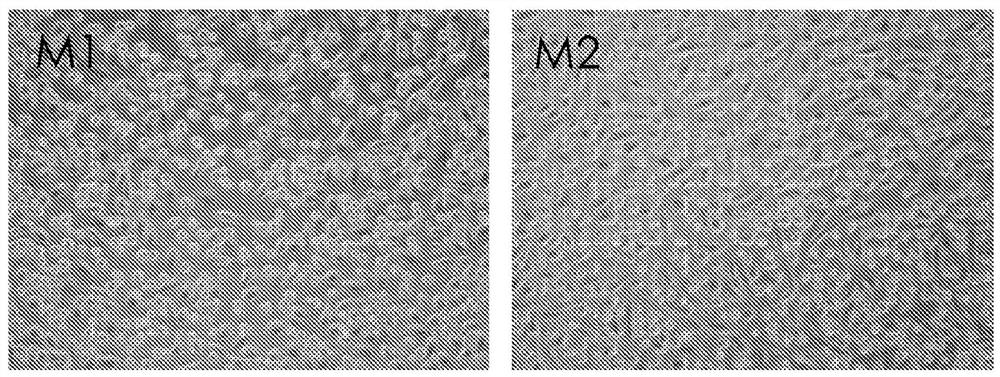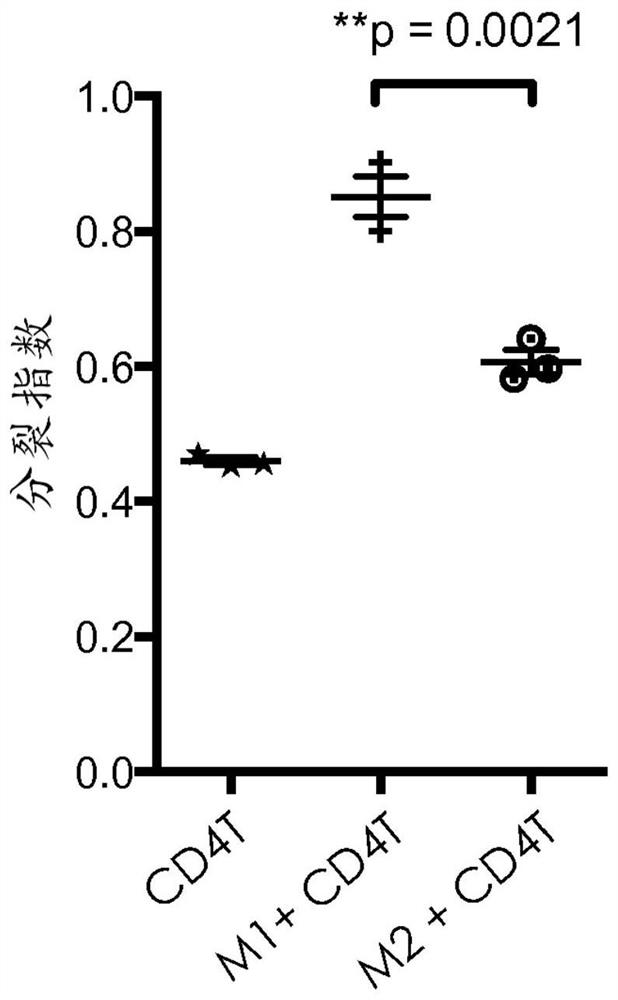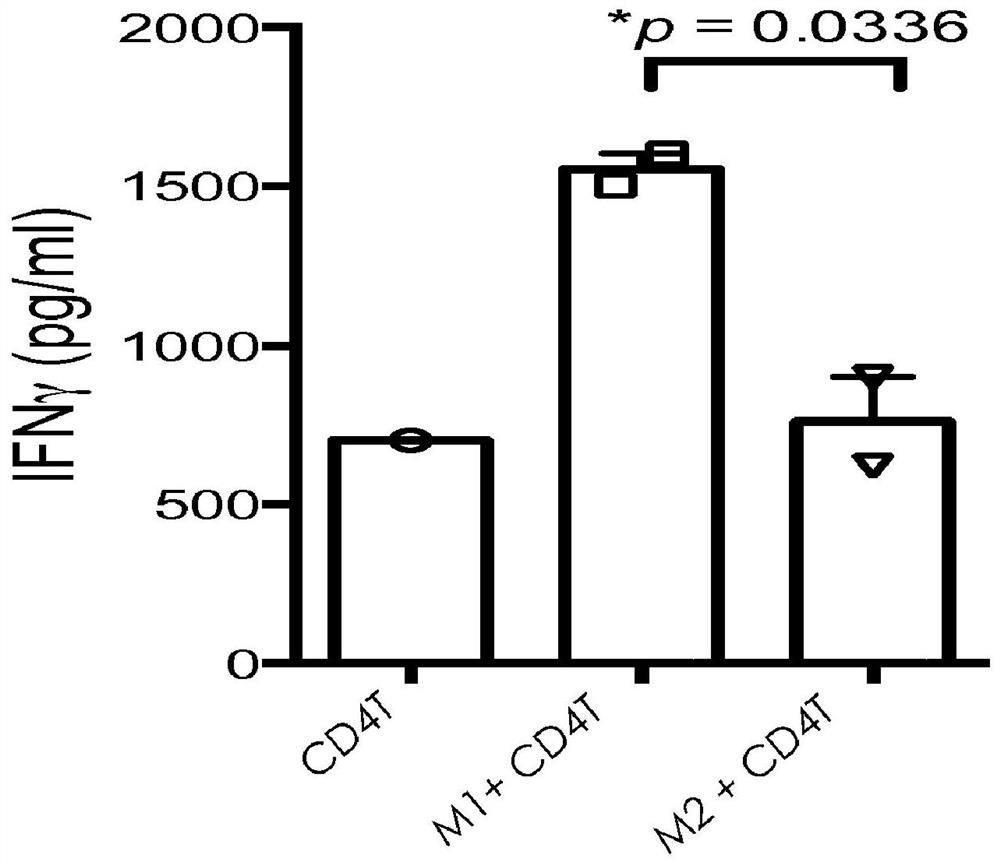Beta-glucan methods and compositions that affect the tumor microenvironment
A glucopyranose and glucopyranose-based technology, applied in the field of serial number 62/115,895 submitted on February 13, 2015, can solve the problem of reducing the overall survival rate of tumor growth
- Summary
- Abstract
- Description
- Claims
- Application Information
AI Technical Summary
Problems solved by technology
Method used
Image
Examples
Embodiment 1
[0055] Establishment and Characterization of Human M1 and M2 Macrophages Cultured in Vitro: Enrichment of CD14 from Human Whole Blood Using Ficoll Gradients and Magnetic Bead Separation + monocytes. Then the enriched monocytes (5×10 5 cells / mL) in M1-polarized (XVivo 10 medium (Lonza Group) supplemented with 5% autologous serum and 100 ng / mL recombinant human granulocyte macrophage colony-stimulating factor (rhGM-CSF) (R&D Systems)) or M2-polarization (XVivo 10 medium supplemented with 10% autologous serum and 50 ng / mL recombinant human granulocyte-macrophage colony-stimulating factor (rhGM-CSF) (R&D Systems) was cultured for 6 days. In experiments performed to evaluate the effect of β-glucan, whole blood was first incubated with vehicle (sodium citrate buffer) or 25 μg / mL soluble β-glucan at 37°C for 2 hours, then Monocytes were isolated and allowed to differentiate. Macrophages were examined for morphology prior to collection for phenotypic analysis. Media from day 6 mac...
Embodiment 2
[0071] Effect of β-glucan on M2 to M1 repolarization: M1 and M2 macrophages from vehicle-treated or β-glucan-treated whole blood were prepared as described above. Expression of a panel of M1 / M2-specific markers, including HLA-DR, CD163, CD206, CD209, CD80, CD86, and PD-L1, was measured by flow cytometry. β-glucan pretreatment did not affect the M1 macrophage phenotype, but did affect the M2 macrophage phenotype. Such as Figure 2A As shown, the mean fluorescence intensity (MFI) of CD163 was downregulated in β-glucan-treated M2 macrophages. In addition, the surface expression of CD86 and the protein and mRNA levels of PD-L1 were enhanced ( Figure 2B ).
[0072] Next, vehicle-treated or β-glucan-treated M1 or M2 macrophages were cultured with CD3- and CD28-stimulated, carboxyfluorescein diacetate succinimidyl ester (CFSE)-labeled autologous CD4 T cells , and T cell proliferation was measured by flow cytometry at the end of the experiment, and the results were quantitatively...
Embodiment 3
[0075] Effect of β-glucan on M2 to M1 repolarization in cells from strongly bound versus weakly bound subjects: assessment of soluble β-glucan in relation to neutrophils and monocytes Early studies of binding revealed that subjects have different binding abilities. Further studies found that soluble beta-glucan bound to at least some immune cells of the strongly bound subjects, and that the strongly bound subjects also had higher levels of natural anti-beta-glucan antibodies. Functional studies identified general cut-offs for binding and antibody levels that were used to differentiate subjects as strong binders (high responsiveness to β-glucan) and weak binders (low responsiveness to β-glucan) .
[0076] To this end, M1 / M2 macrophages derived from monocytes from strong and weak binders treated with soluble β-glucan were assessed. M1 and M2 macrophages from strong and weak binders were subsequently assessed for A) phenotype, B) enhancement of CD4 T cell proliferation, and C) ...
PUM
 Login to View More
Login to View More Abstract
Description
Claims
Application Information
 Login to View More
Login to View More - R&D
- Intellectual Property
- Life Sciences
- Materials
- Tech Scout
- Unparalleled Data Quality
- Higher Quality Content
- 60% Fewer Hallucinations
Browse by: Latest US Patents, China's latest patents, Technical Efficacy Thesaurus, Application Domain, Technology Topic, Popular Technical Reports.
© 2025 PatSnap. All rights reserved.Legal|Privacy policy|Modern Slavery Act Transparency Statement|Sitemap|About US| Contact US: help@patsnap.com



